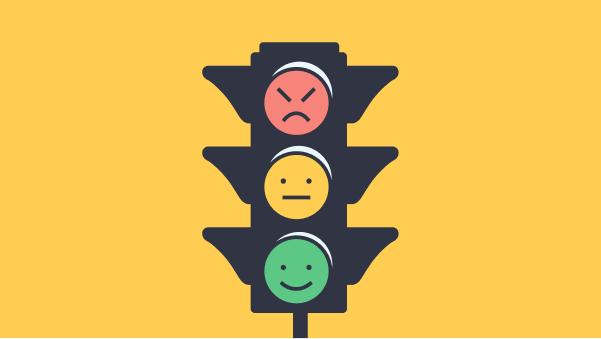6 Behaviour management strategies for challenging behaviour
In this guide
In the post-pandemic education sphere, most teachers you talk to will cite one reason as to why they are burned out, unmotivated, or feeling lost in teaching: behaviour.
According to a 2022 survey, three out of every four teachers reported job-related stress. An article by BBC News (2024) claims teachers are “reporting worsening violence and abuse from pupils since the Covid pandemic”.
For teachers to continue the great work of educating and inspiring the next generation, we need to change our approach to managing challenging behaviour in the classroom. While we don’t aim to ‘fix’ or ‘change’ our students, we can implement better practices to reduce or eliminate disruptions and distractions in the classroom.
As a new teacher, I found myself repeating old practices that were around when I was in school. Behaviour plans, names on the board, or the loss of activities and privileges during the school day. While these sometimes provided me with immediate relief in my classroom management, I wasn’t really seeing an overall change in the behaviour issues in my classroom.
I began to realise that it was only when I made time to educate the whole child and restore the relationship between me and the student or the student and another classmate that I was really seeing positive growth and change. These behaviour management strategies provided me with the tools needed to sustain positive change in my classroom environment.
Effective behaviour management always starts with collaboration. There are so many additional resources at the school or district level that are put in place to brainstorm, collaborate, and problem-solve the most challenging behaviours teachers may experience in the classroom. If you are feeling alone or unsure of what to do next, reach out to your teammates!
Sometimes some of our ‘quick fix’ behaviour management strategies often leave our students feeling dysregulated or heightened and the behaviour continues to disrupt our classroom environments.
In an effort to build student-teacher relationships and centre restorative justice in the classroom, the following behaviour management strategies are student-centred and focus on rebuilding relationships, fostering connection, and fostering opportunities for growth. Each strategy can be tailored to the unique student or student group you are working with. The aim is never to make a child feel isolated or removed because of their behaviour choices. Rather than a “time-out” these strategies invite us to have “time-in” and connect directly with our students.

1) Check In Check Out (CICO)
This simple strategy is a great place to start when noticing a challenging behaviour in the classroom. Sometimes, all students need is to be reminded and held accountable for their decision-making. Check In Check Out, or CICO, strategies focus on a specific skill, usually positive, such as being respectful, keeping my hands to myself, or using an appropriate voice level.
According to Panorama Education, “A student receiving CICO meets with adults throughout the school day to reinforce and track behavioural goals. The student “checks in” with the champion first thing in the morning. Throughout the day, teachers provide positive and corrective feedback. Students then “check out” with the champion at dismissal to review their overall behaviour that day.
https://www.panoramaed.com/blog/check-in-check-out-cico-intervention
Oftentimes, a student utilising this strategy might travel with a point, feedback, or tally sheet throughout their day. The student and teachers might award points for following a skill, leave notes for the champion (adult in the building championing the student), or track a positive behaviour that the student is hoping to achieve.
A CICO sheet can look a variety of different ways depending on the age or need of the student. A simple checklist or tally system might work best for an upper primary or secondary student, while a range of emoji faces with visuals work best for a younger student.
A Check In Check Out strategy not only reinforces behavioural goals but allows students to reflect on these specific goals multiple times throughout their day.
2) Offer mindfulness
Another strategy to implement when facing challenging behaviours in the classroom is mindfulness. Sometimes, students need to reframe, recenter, or focus their minds to calm their bodies down.
According to Learning for Justice, in the article Reframing Classroom Management, teachers should “teach students how to calm down, breathe and focus their energy. Learning these skills will help students reflect on their behaviour and be prepared to re-engage with the classroom and the content. Mindfulness can be done in a safe space like a classroom peace table or as part of a daily routine. Some schools have a special room devoted to mindfulness and use it as an alternative to detention” (Learning for Justice.org).
Sometimes, challenging behaviours are caused by a dysregulated student. Offering simple mindfulness activities such as breathing exercises, identifying a colour for emotions, or meditation can change a student’s emotions so they can enter the classroom more regulated.
A “calm corner” in the classroom might be a helpful tool to utilise when a student needs this strategy to regulate their emotions. This is an example of a calm corner from thesocialemotionalteacher.com.
3) In-school community service
For a student with behaviour that is destructive or disruptive to the classroom, it may be best for them to be removed from the classroom setting. However, studies find that students suspended from school are more likely to fall behind academically, repeat grades, or even drop out of school.
If a student needs to be removed or partially removed from the classroom, in-school community service is a helpful option. Learning for Justice states to “involve the student in making their school a better place. Draw the connection between themselves and the larger school community by having them participate in school improvement, helping the janitorial crew or mentoring a younger student” (learning for justice.org).
When a student spends some of their day helping out or getting involved in areas in which they can improve their school environment, they are creating positive connections and experiences associated with school. This strategy can be for a certain part of the day, or a few minutes each day to reinforce positive connections but also help the student understand their behaviour is disruptive to the classroom.

4) Movement options
Movement options or breaks can be a powerful tool to support students with challenging classroom behaviour. When a student’s behaviour leads to dysregulation, disruption, or a safety concern, they may need to refocus their attention by releasing excess energy.
Some simple activities like participating in yoga, stretching, running in place, etc. can help regulate bigger emotions and leave the student feeling more calm.
A cool-down stretch such as, The Cool Down, can provide a student with heightened behaviour a chance to calm their body. This can be done inside or outside of the classroom and should be followed with a conversation about the behaviour after the student can calm their body down.
5) Nonverbal reminders
Nonverbal reminders and cues can work really well for a student with challenging behaviour in the classroom. These subtle signals can let a student know when their actions or words are not following expectations.
A teacher may use a hand gesture, eye contact, a facial expression, physical proximity, or a hand on a desk to try and redirect the student during a lesson. These cues maintain a positive and respectful classroom atmosphere while addressing behavioural issues. As teachers plan these nonverbal cues, they must be aware of the cultural impacts that nonverbal cues such as proximity or eye contact might have on their students.
These nonverbal cues and reminders not only provide the teacher and student with a quiet and subtle check-in tool, but they also show the student the teacher notices them and cares about them. Sometimes in more attention-seeking behaviours, this is all a student really needs.
PBISworld.com shares some simple tools for both positive and redirecting nonverbal communication in the classroom:
PBISworld.com
- “Use cues like smiles, thumbs up, shaking head “yes”, etc to praise students for correct behaviours, participation, volunteering, etc, or to reassure them and encourage them
- Use simple cues like shaking head “no”, raising eyebrows, giving a “one minute” finger signal, etc to redirect students, give directives, etc.
- Meet with student individually to identify with student how you and they should communicate in a special way
- Have student, as much as possible, pick the sign to use
- Practice with the student and explain when you notice they might need some re-focus, you will show them the sign”

6) Phone call with a trusted family member
Another strategy to implement with challenging classroom behaviour can be as simple as a phone call or meeting with a trusted family member. Students may not see their biological parents as the people who are most involved in their lives, so be open and willing to have conversations with trusted family members who care about the student.
During the school day, if a student is having challenging behaviour, sometimes checking in with this adult over the phone or email message might help the child refocus. Open communication with the family members in a student’s life can show a child the support and love they need to make better behavioural decisions.
These phone calls can be something scheduled and regular, such as checking in with Grandma for a two-minute phone call after break time. A phone call can also come once a week to go over a student’s ‘highs and lows’ for the week.
It is important to remember that for every negative phone call to a student’s trusted adult, there are at least one or two positive phone calls or connections. This is a time to strengthen the school-home connection for all parties involved. This strategy can be a powerful tool in behaviour management.
While these strategies may work for some students and some behaviours, we know that students who feel supported and loved are more willing to engage positively in the classroom environment. Effective behaviour management goes beyond punitive measures. Effective behaviour management involves fostering positive relationships, setting clear expectations, and providing the unique support each child needs. Using these strategies will assist teachers in creating an inclusive and safe learning environment where students feel empowered to regulate their behaviour and thrive both academically and socially.
Citations and further resources
- Rand Corporation, 2022. Restoring Teacher and Principal Well-Being Is an Essential Step for Rebuilding Schools. [online] Available at: https://www.rand.org/pubs/research_reports/RRA1108-4.html [Accessed 21 May 2024].
- PBIS World, 2023. Non-Verbal Cues & Signals. [online] Available at: https://www.pbisworld.com/tier-2/non-verbal-cues-signals/ [Accessed 21 May 2024].
- National Center for Education Statistics, 2023. See Digest of Education Statistics, cutting interfered with their teaching. [online] Available at: https://nces.ed.gov/programs/coe/indicator/a11 [Accessed 21 May 2024].
- Panorama Education, 2024. Check-In/Check-Out (CICO): Intervention Tips and Guidance. [online] Available at: https://www.panoramaed.com/blog/check-in-check-out-cico-intervention [Accessed 21 May 2024].
- Learning for Justice, 2023. Learning For Justice. [online] Available at: https://www.learningforjustice.org/ [Accessed 21 May 2024].

Victoria Dotson
briefcase iconLiteracy Specialist
Victoria Dotson, an esteemed educator and professor in Chicago, Illinois, leverages her background as a Literacy Specialist to support multilingual learners and mentor preservice teachers. Victoria excels in developing literacy practices, promoting diverse literacy experiences in the classroom, and developing restorative curriculum.
Other posts
Want more content like this?
Subscribe for blog updates, monthly video releases, trending topics, and exclusive content delivered straight to your inbox.













